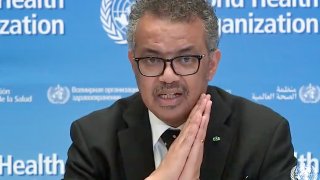
World Health Organization officials said the coronavirus can spread in asymptomatic patients, about one to three days before symptoms start.
“It’s very important to note that even if you are pre-symptomatic, you still have to transmit through droplets. You still have to have these infectious particles that come out of your nose and mouth,” Dr. Maria Van Kerkhove, the WHO’s team lead on the coronavirs, said at a press conference from the organizations Geneva headquarters on Monday.
She said models of the outbreak suggest that there are “large numbers of unrecognized transmission.” She emphasized those are unrecognized patients, not asymptomatic.
“I’m saying we may be missing people who are out there who are infected but we’re missing them because of certain surveillance strategies,” she said.
Dr. Mike Ryan, the WHO’s executive director for emergencies program, said there may be more people who are “infected unknowingly.”
A study from Singapore released last week by the Centers for Disease Control and Prevention examined how presymptomatic or asymptomatic coronavirus carriers could spread the deadly virus. Researchers concluded that people who spread the virus, despite feeling healthy, could pose a threat to disease control.
“These findings also suggest that to control the pandemic it might not be enough for only persons with symptoms to limit their contact with others because persons without symptoms might transmit infection,” researchers said.
The researchers examined all 243 coronavirus cases reported in Singapore from Jan. 23 to March 16. They identified seven clusters of cases where presymptomatic transmission most likely occurred.
The seven clusters occurred between Jan. 19 and March 12 and involved from two to five patients each, according to the report. Ten of the cases within the clusters could be attributed to presymptomatic transmission, and accounted for 6.4% of the 157 locally acquired cases reported as of March 16, researchers added.
“The possibility of presymptomatic transmission of [the coronavirus] increases the challenges of COVID-19 containment measures, which are predicated on early detection and isolation of symptomatic persons,” researchers said in their findings. “The magnitude of this impact is dependent upon the extent and duration of transmissibility while a patient is presymptomatic, which, to date, have not been clearly established.”
CNBC’s Jessica Bursztynsky contributed to this article.
This story first appeared on CNBC.com. More from CNBC:

